Thursday, il 2º ottobre, was our excursion day. The primary reason we stopped in Naples on this trip was to see Pompei and Herculaneum. In our previous four visits to Italy, we had rousted about Naples twice but had not ventured to either of these other famous cities.
Herculaneum is an ancient Roman town located a little South of Naples and Southwest of Mount Vesuvius. The town was buried under a massive pyroclastic flow back when Mt Vesuvius erupted in 79 AD.
Like Pompei, Herculaneum is famous as one of the few ancient cities to be preserved nearly intact, as the solidified material from the volcano that blanketed the town protected it against looting and the elements. Although less known than Pompei today, it was the first and only discovered Vesuvian city until Pompeii was revealed in 1748. Unlike Pompei, the mainly pyroclastic material that covered Herculaneum carbonized and preserved many wooden objects such as roofs, beds, and doors, as well as other organic-based materials such as food and papyrus. You’ll see some of this in our photos.
As a point of interest. The preservation of Pompei was different than that of Ercolano or Herculaneum. The winds around Vesuvius general flow Southeast so when Vesuvius spewed the volcanic ash the first day, it went up some 20 miles. Ash and pumice were blown over Pompei but only small amounts of the ash got to Ercolano – an inch or so. But early on the second day, the eruption fizzled and the column of ash and dust collapsed back on Vesuvius and its flanks. This was followed by the equivalent of an avalanche or tsunami of ash flowing down the valleys of the volcano and into Ercolano or Herculaneum. The result was about a 66 foot thick blanket across the town with very little destruction in many sections of the town. Plus, many of the inhabitants had time to evacuate. Pompei on the other hand had little warning and a bunch of rock and ash fell directly on that town, crushing buildings and trapping people and livestock.
Lordy, there is so much more to learn. For instance, Herculaneum was a summer resort, closer to the water and occupied by mostly wealthy Romans (summer homes!) That means more beautiful works of art, paintings, etc., than what existed in Pompei. And then it is almost shocking that the excavations and preservations have enabled the archeologists to identify the names of the families who occupied each of the structures and also identify bars, baths, casinos and yes, houses of ill repute!
Clearly we could not record and remember everything our guide said and we are not in Naples to record a documentary. We do however, highly recommend doing your own research in preparation for your tour of the two towns!
In this first photo, note that we are looking down into Ercolano. We start the tour at the level up to which the pyroclastic flow rose the day after Vesuvius erupted. Likewise, the town or buildings you see around the excavation are sitting on top of the remnants of that flow. The archaeologists believe only 33% of Ercolano has been excavated so far and that there are indeed, sections of the old town under the newer buildings you see in the photo,
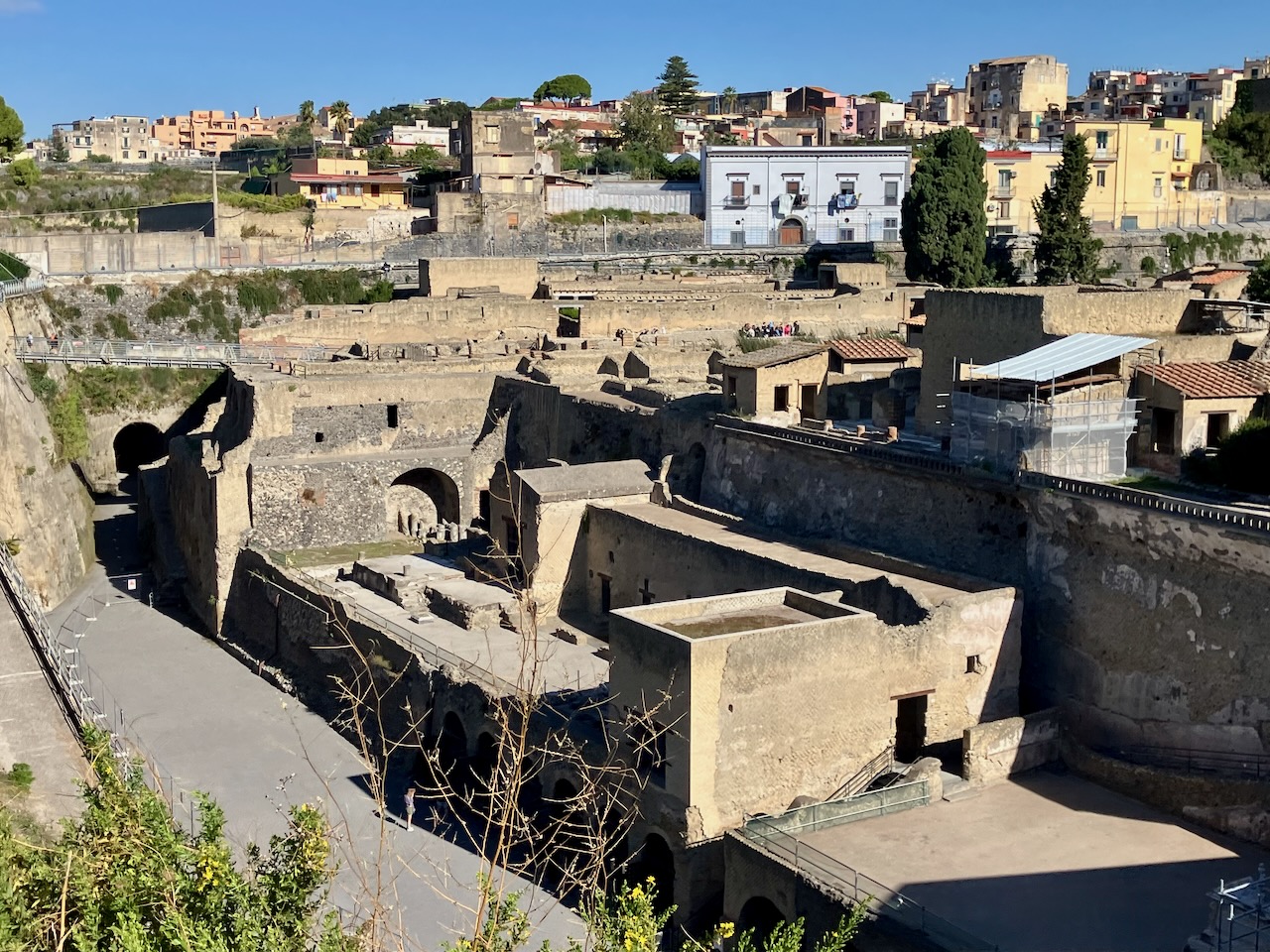

Before going down into the town, we visited the Archaeological Museum where many relics are maintained.
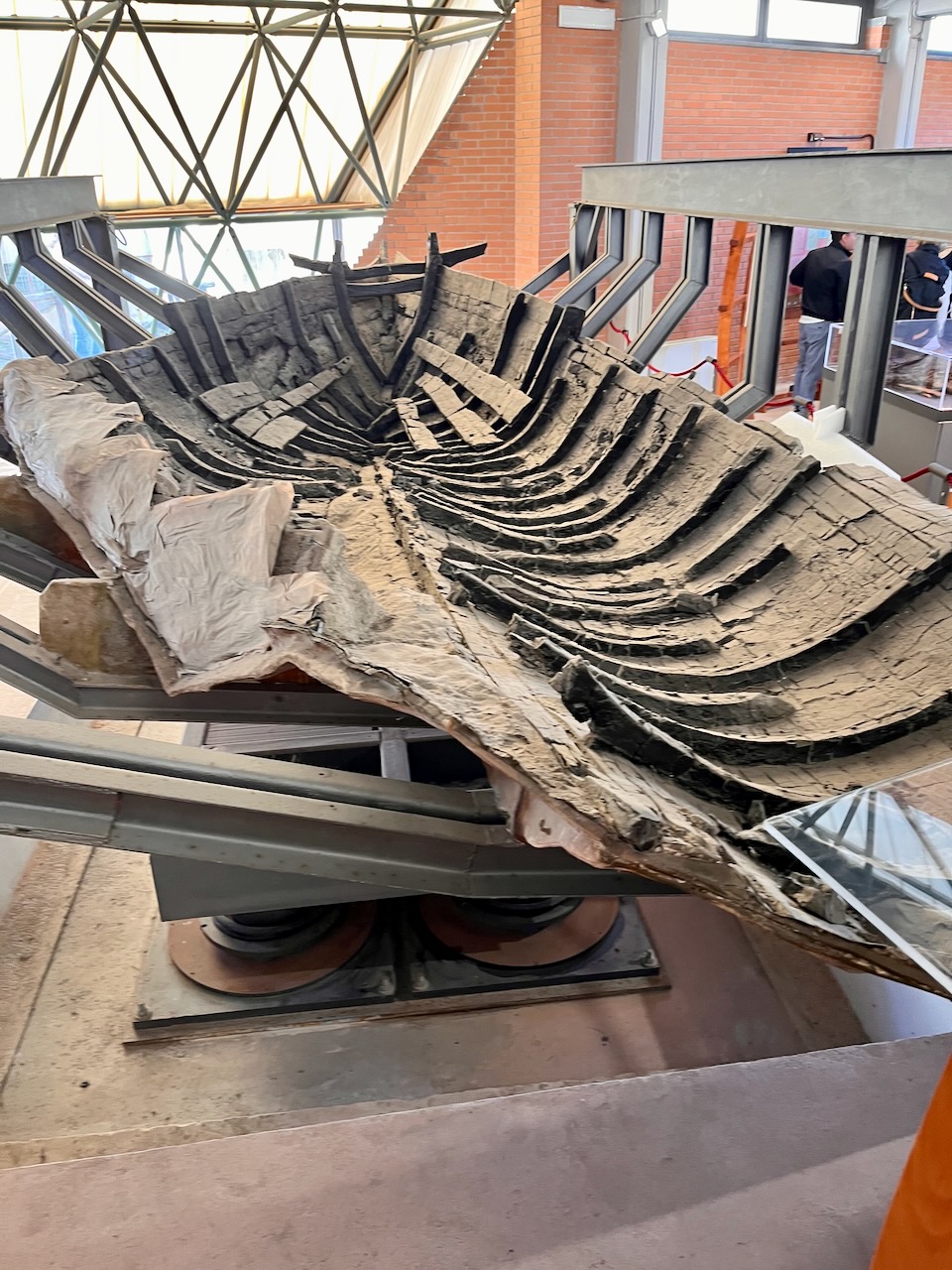


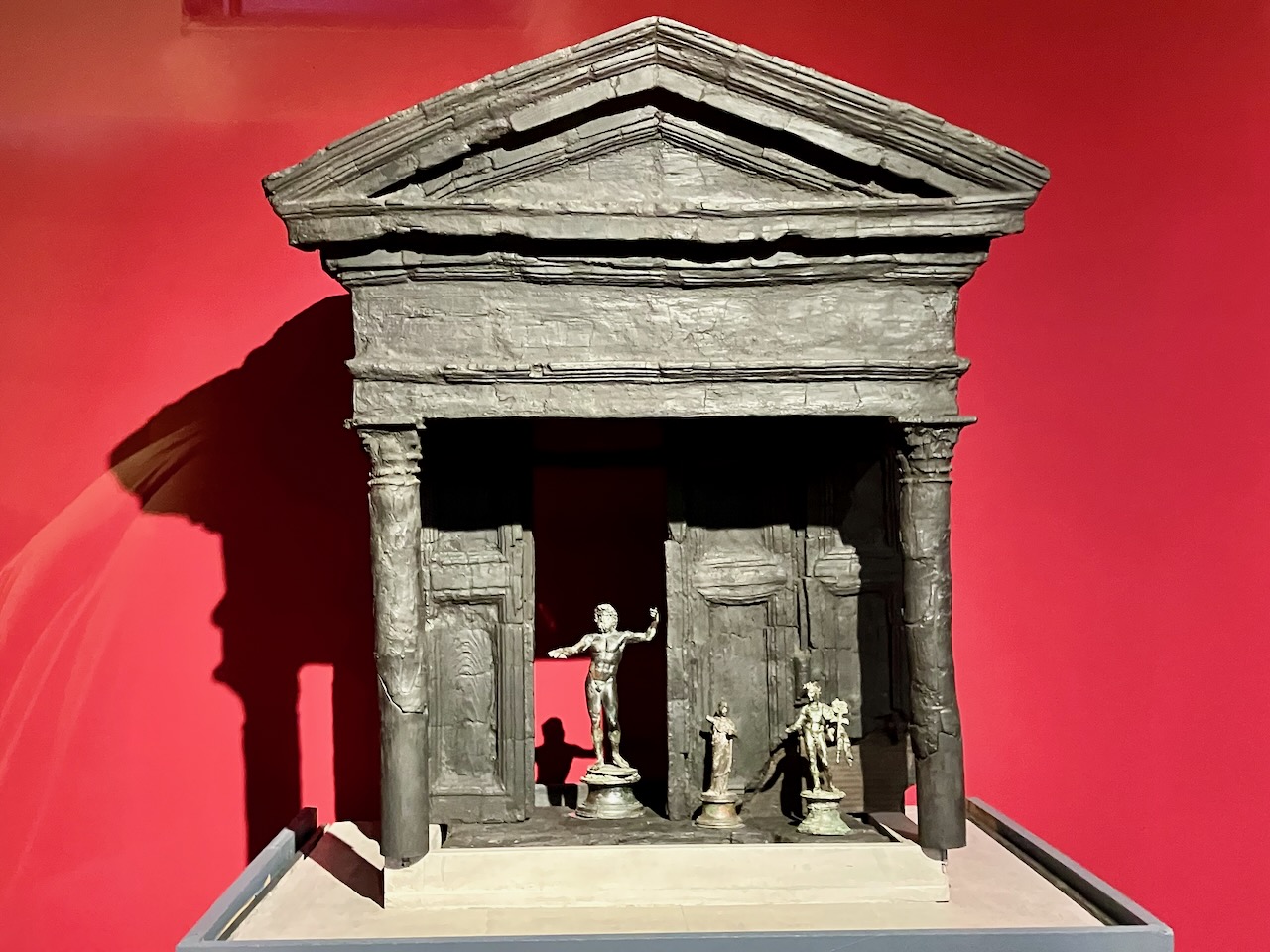
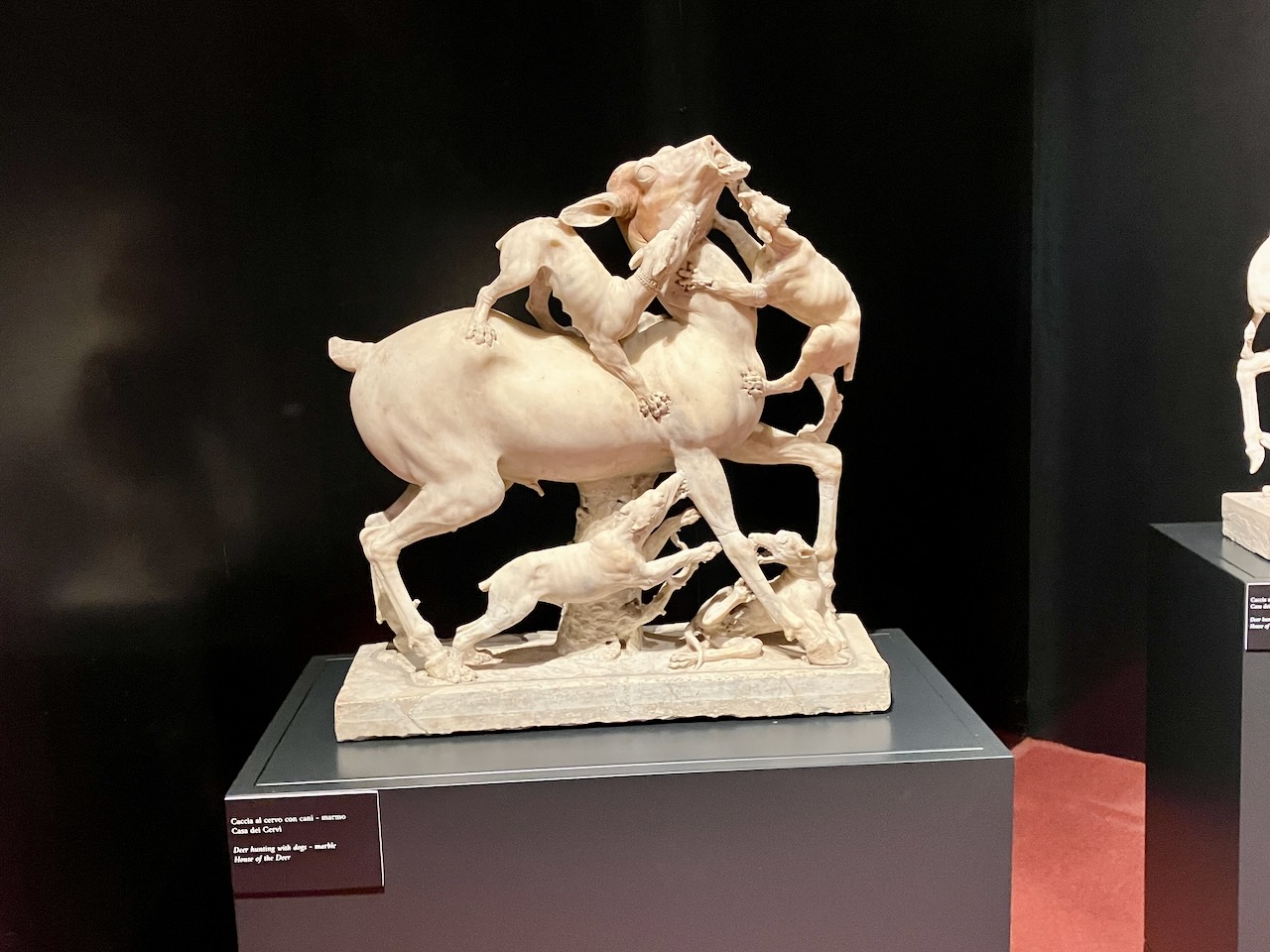
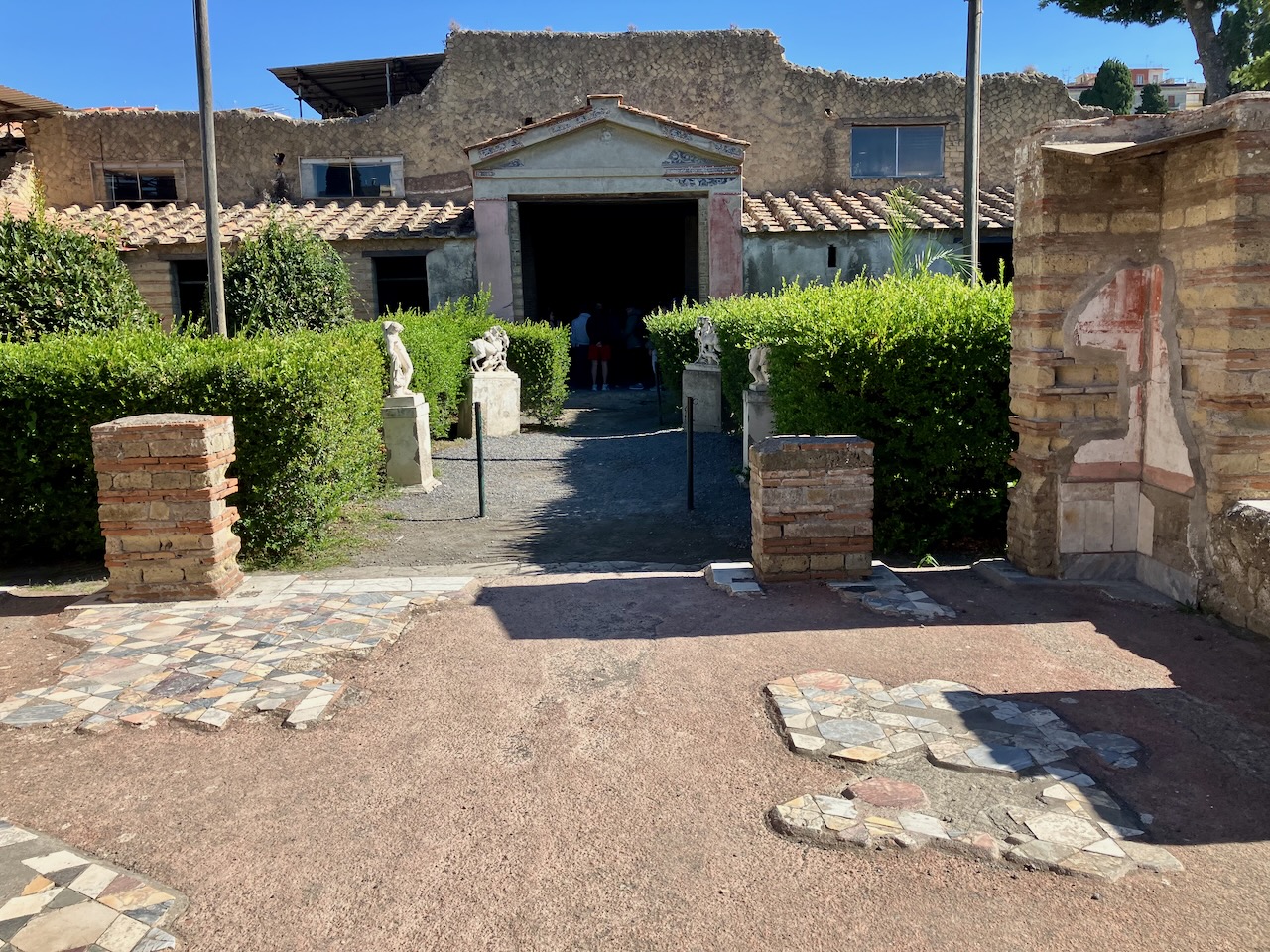
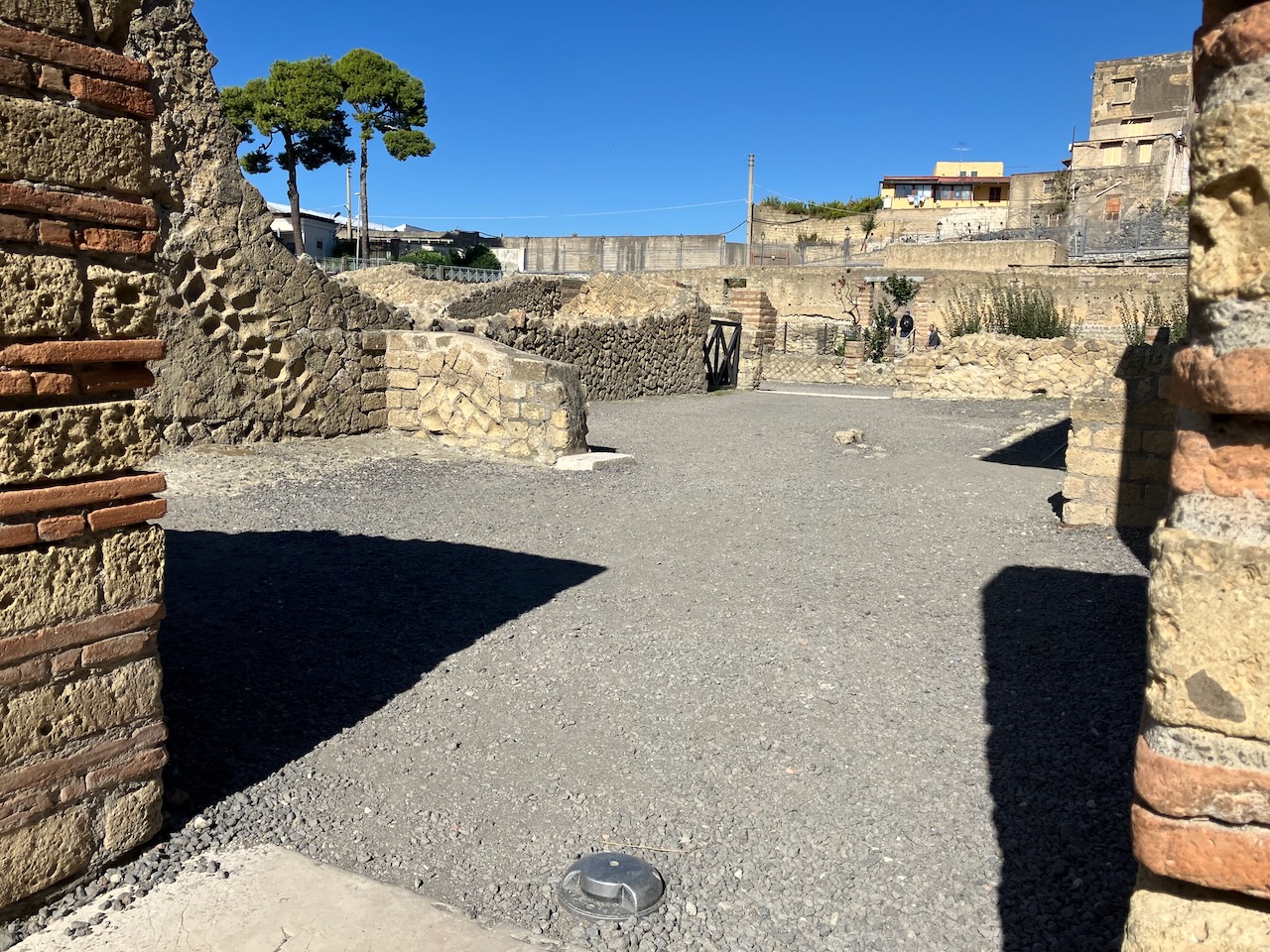
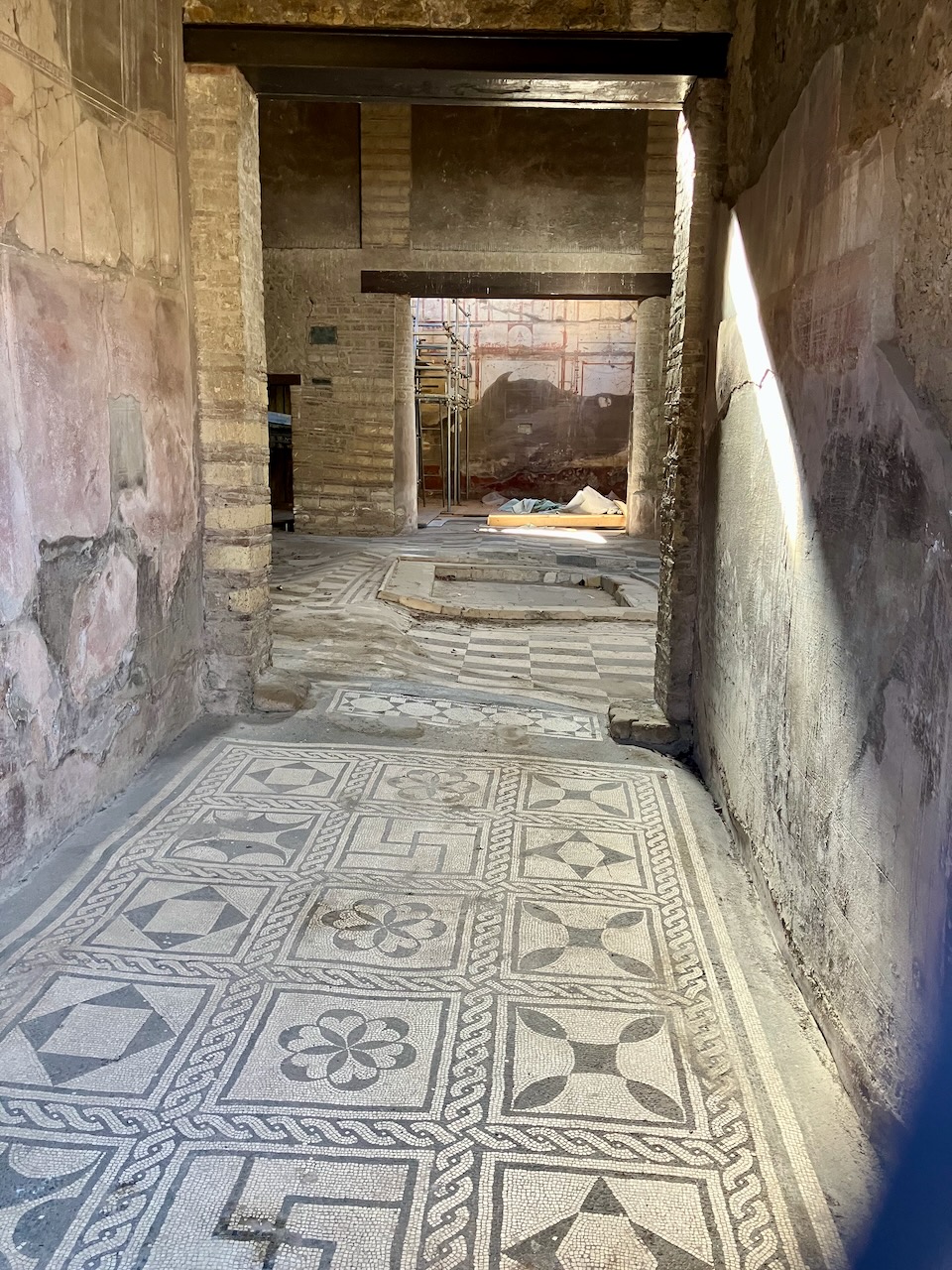
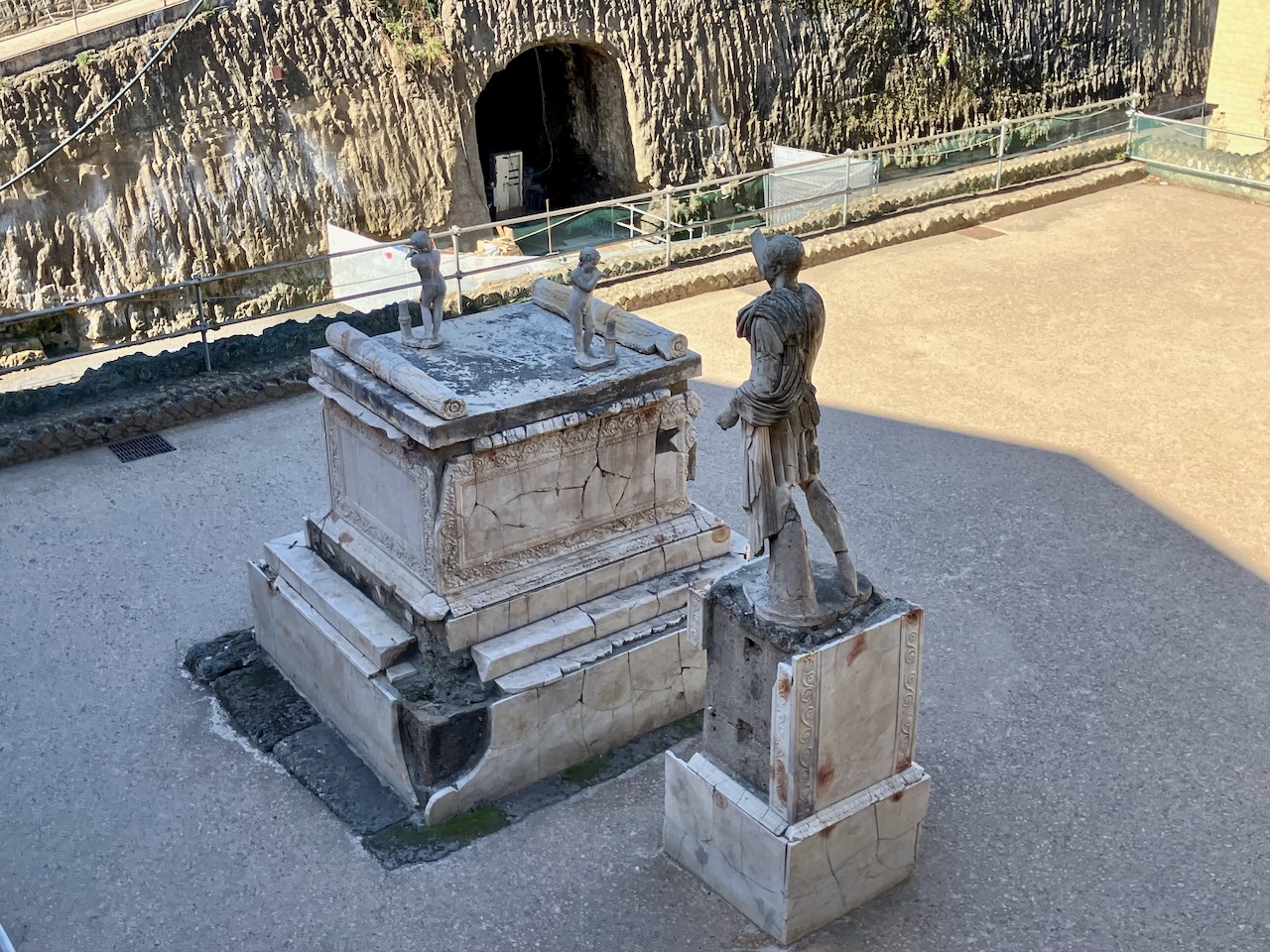
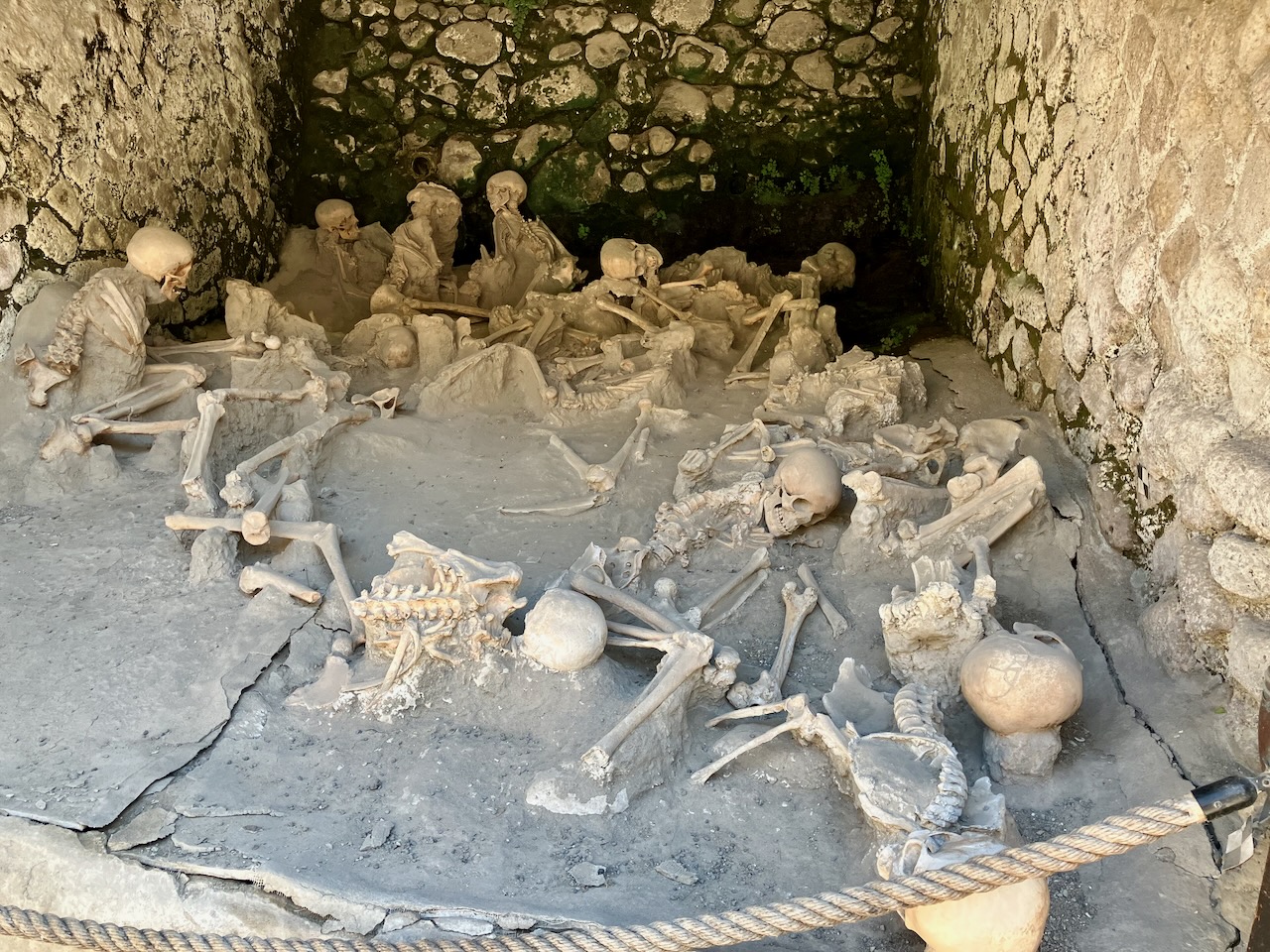
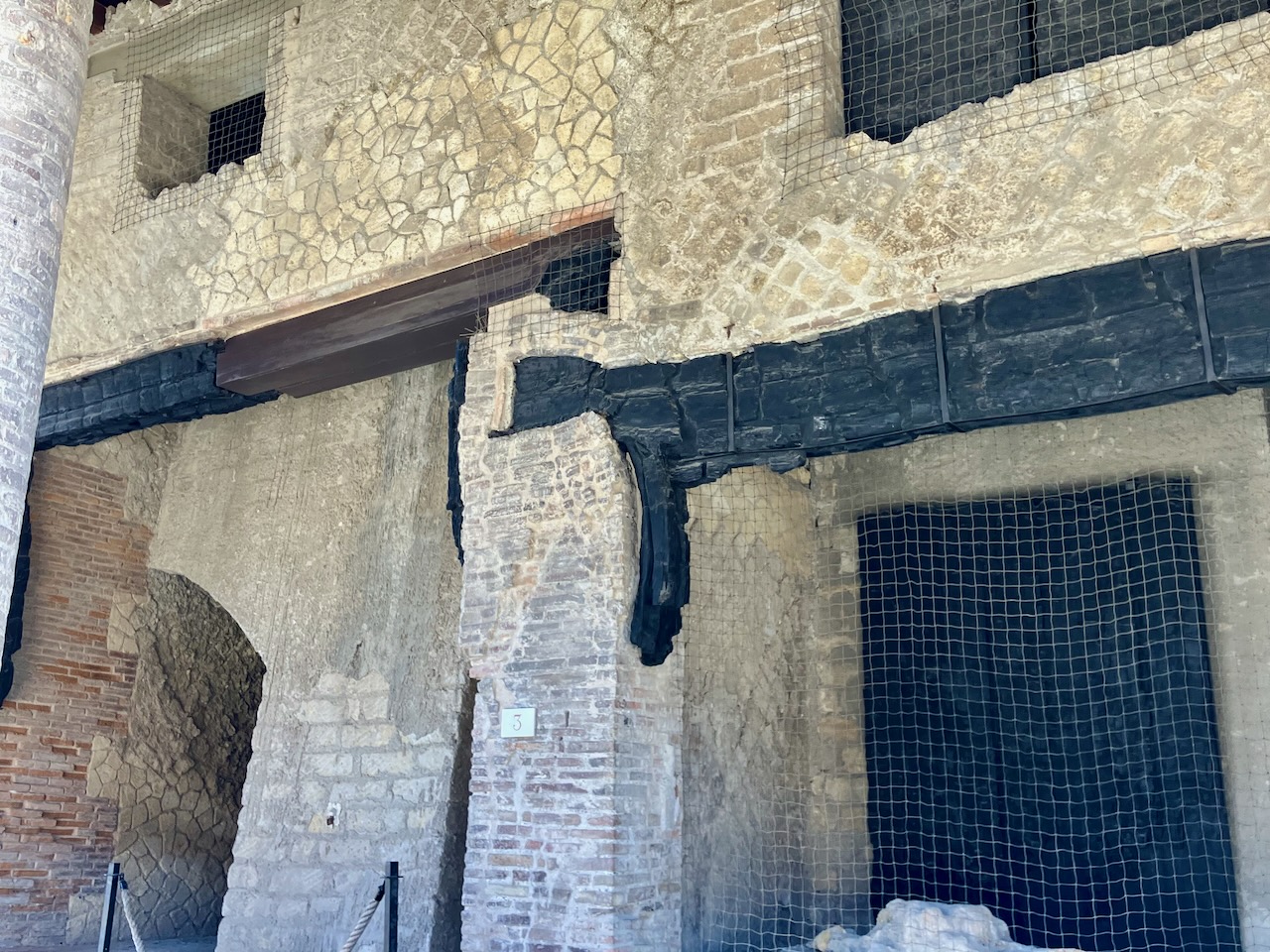
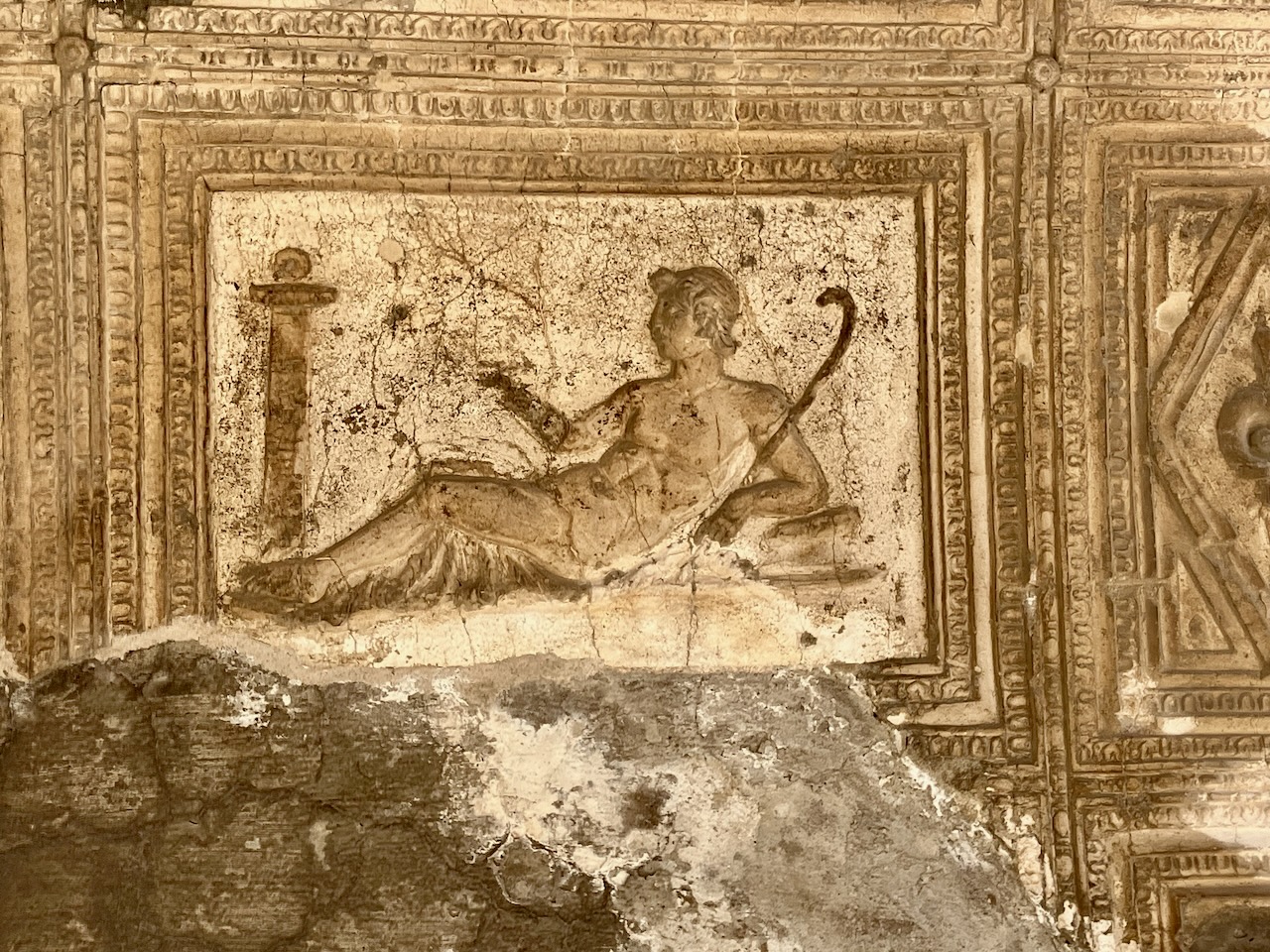
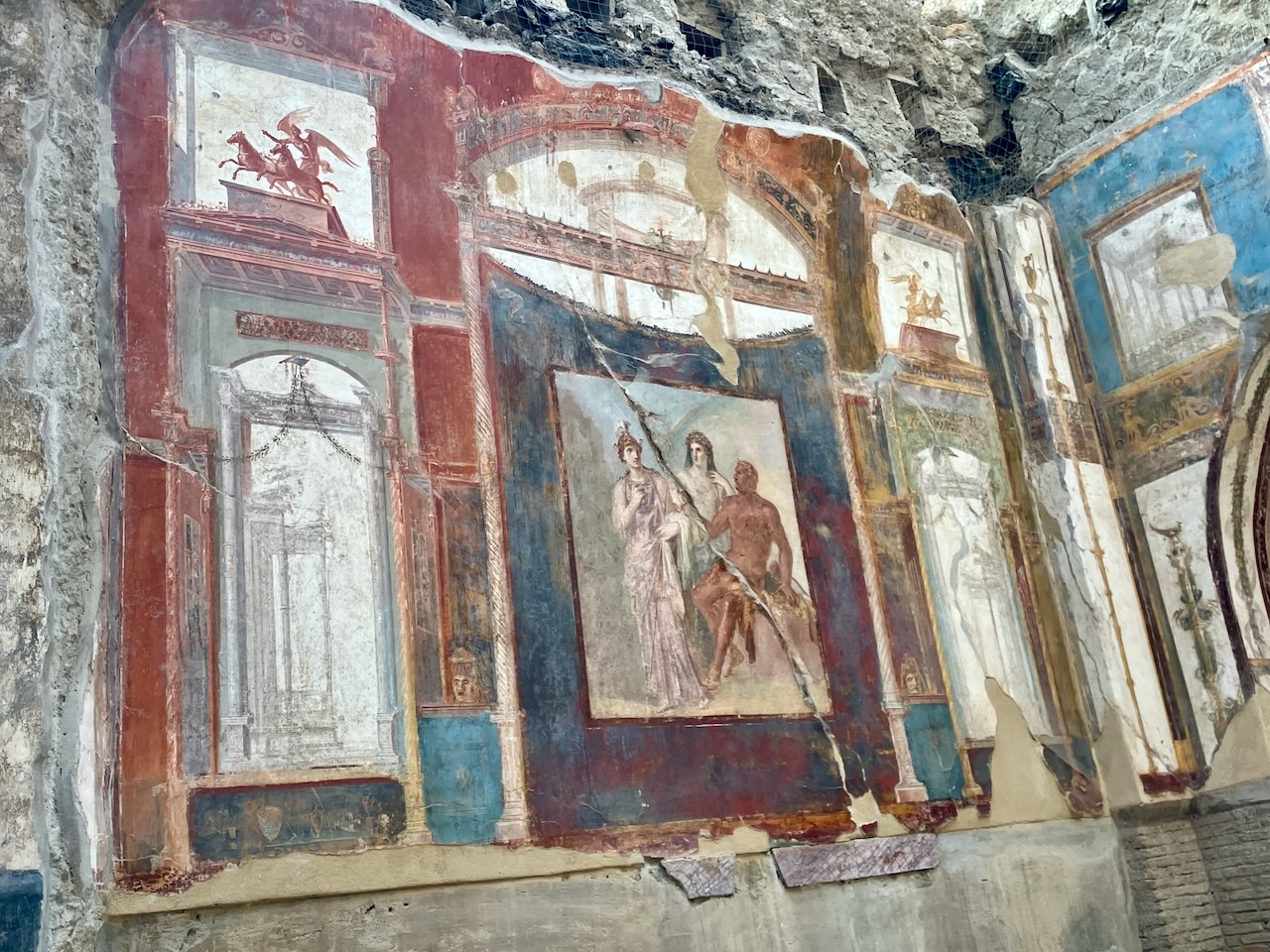
There was a bunch more to see. One could spend way more than the two hours we were there and still not see or learn about it all. However, Diego and the tour company took pity on us and bussed us off for a lunch break. The stop was at a mall believe it or not but we opted for what appeared, and turned out to be, a pretty good Italian restaurant and left the MacDonalds to other American tourists in the group!

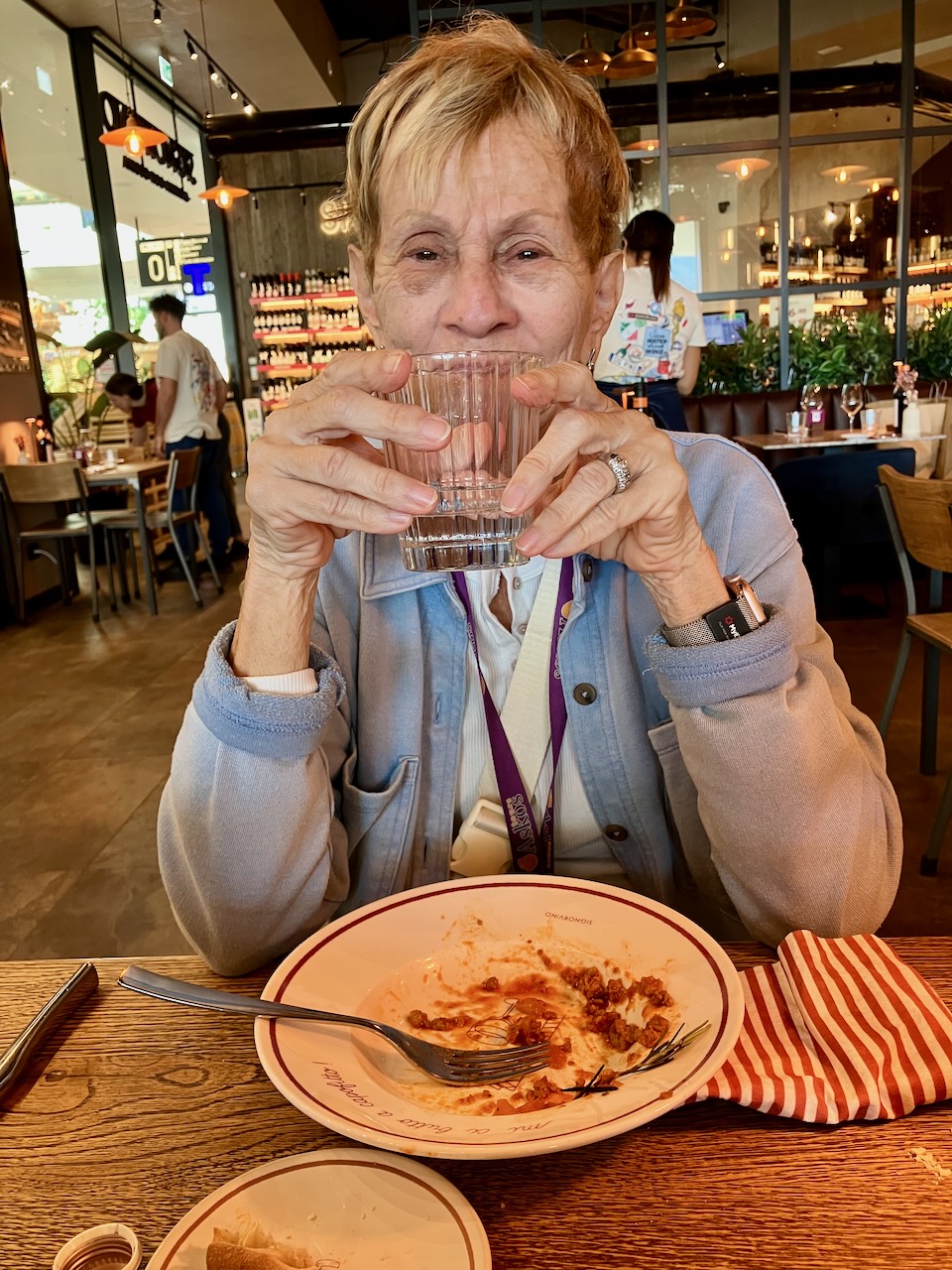
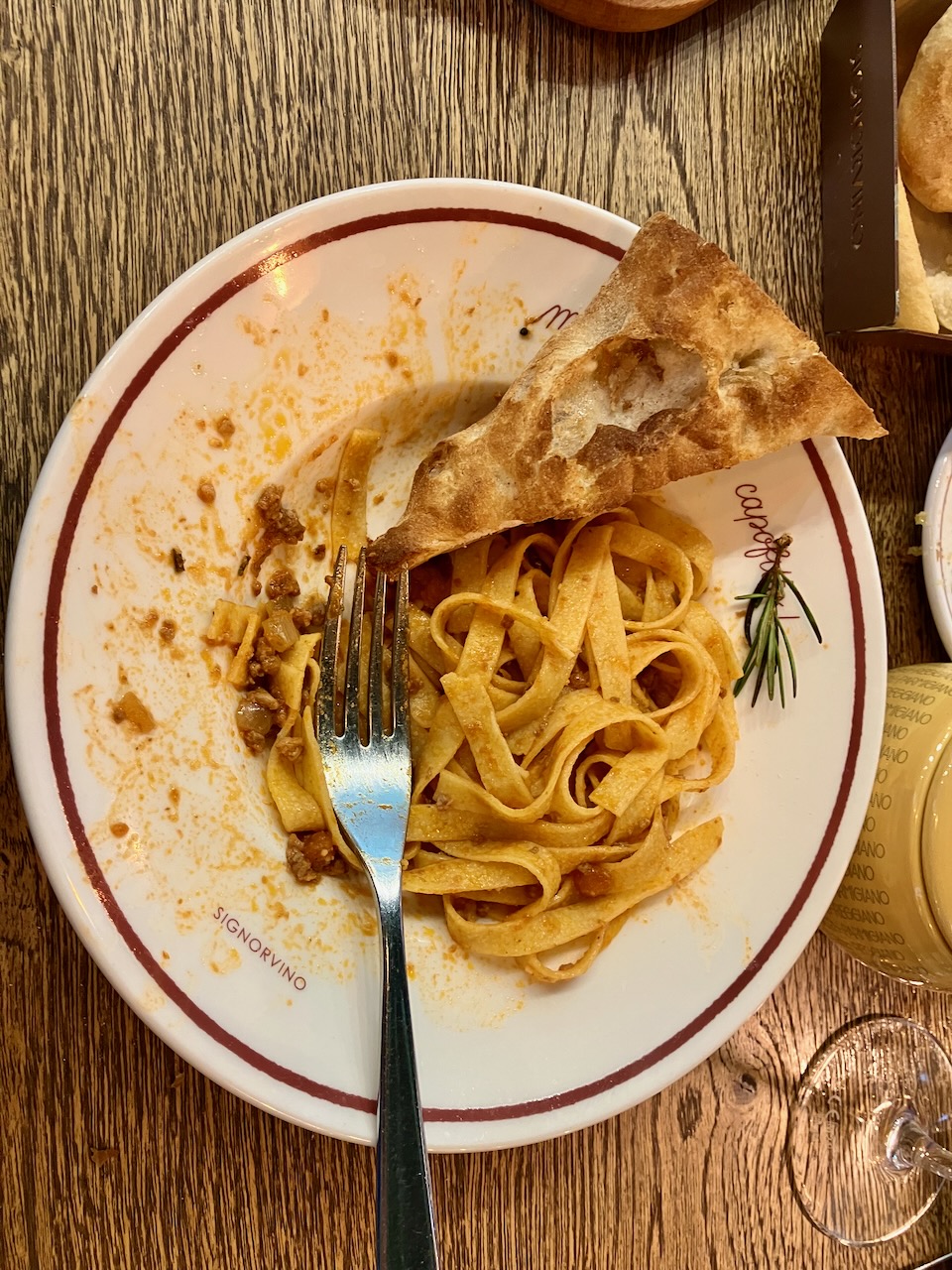
Sorry folks but we are going to do it to you again – put off the remainder of our report on this day, the excursion day, until tomorrow. Promise we’ll cover Pompei next. We still have to pack up for our next relocation, a train ride from Napoli to Palermo, to include crossing the Messina Strait. A domani.